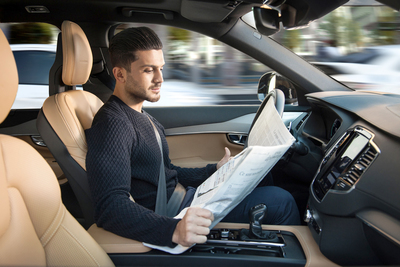Risk In A Changing Insurance Market For Driverless Vehicles
MCLEAN, Va., June 21, 2017; In October 2015, tax giant KPMG published a report projecting a 60 percent reduction in the $135 billion auto insurance market by 2040 owing to the advent of driverless cars and the ensuing risk landscape. Despite projections, insurers will likely play a key role in supporting the safe deployment, adoption and sustainability of driverless cars. The relatively unknown nature, likelihood and extent of driverless accidents presents risk management challenges to both the automotive and insurance industries. Future motor policies may require non-traditional risk management, underwriting and actuarial approaches to account for driverless capabilities and shifting liabilities.
The new study "Risk Assessment of Semi-Autonomous Vehicles Using Driver Behaviour Risk Analysis: A Paradigm Shift in Motor Insurance," which will be presented by author Cian Ryan at the Society for Risk Analysis conference, June 19-21 in Lisbon, Portugal, at the Calouste Gulbenkian Foundation, proposes how risks might be governed and policies constructed using the enormous reams of data that driverless vehicles will supply the automotive insurance market.
At present, the inherent uncertainties relating to driverless cars reside outside conventional insurance risk management due to their innate complexity and scarce historical data. A proactive risk governance approach is presented to support risk transfer and management in the face of uncertainty. Ryan is a researcher at the University of Limerick and a contributing partner to the Vision Inspired Driver Assistance Systems (VI-DAS) initiative, a grant-funded project under the European Union's Horizon 2020 Research and Innovation Programme.
Ryan examines the "likely risk trajectories across six levels of vehicle automation" by examining automated driving anomalies, from swerving and braking to system disengagements. Due to the complexity of autonomous systems, safety-critical risks will likely materialize in the actuation process (i.e. steering, braking, and acceleration). Thus, any anomalous driving may be symptomatic of hardware or software faults, for example.
His paper proposes a model that takes advantage of the enormous data sets that will be generated covering hundreds of millions of driverless vehicle miles. As insurance risks shift from individual owners to original equipment manufacturers and their suppliers, as well as software engineering firms, Ryan offers a model that can address the "potentially large loss exposures for these industries."
Manufacturers, software companies, insurers, law firms, and governmental agencies have a clear stake in what is likely to be a sea of change in risk policy across private and public sectors.
About SRA
The Society for Risk Analysis is a multidisciplinary, interdisciplinary, scholarly, international society that provides an open forum for all those interested in risk analysis. SRA was established in 1980 and has published Risk Analysis: An International Journal, the leading scholarly journal in the field, continuously since 1981. For more information, visit www.sra.org.



